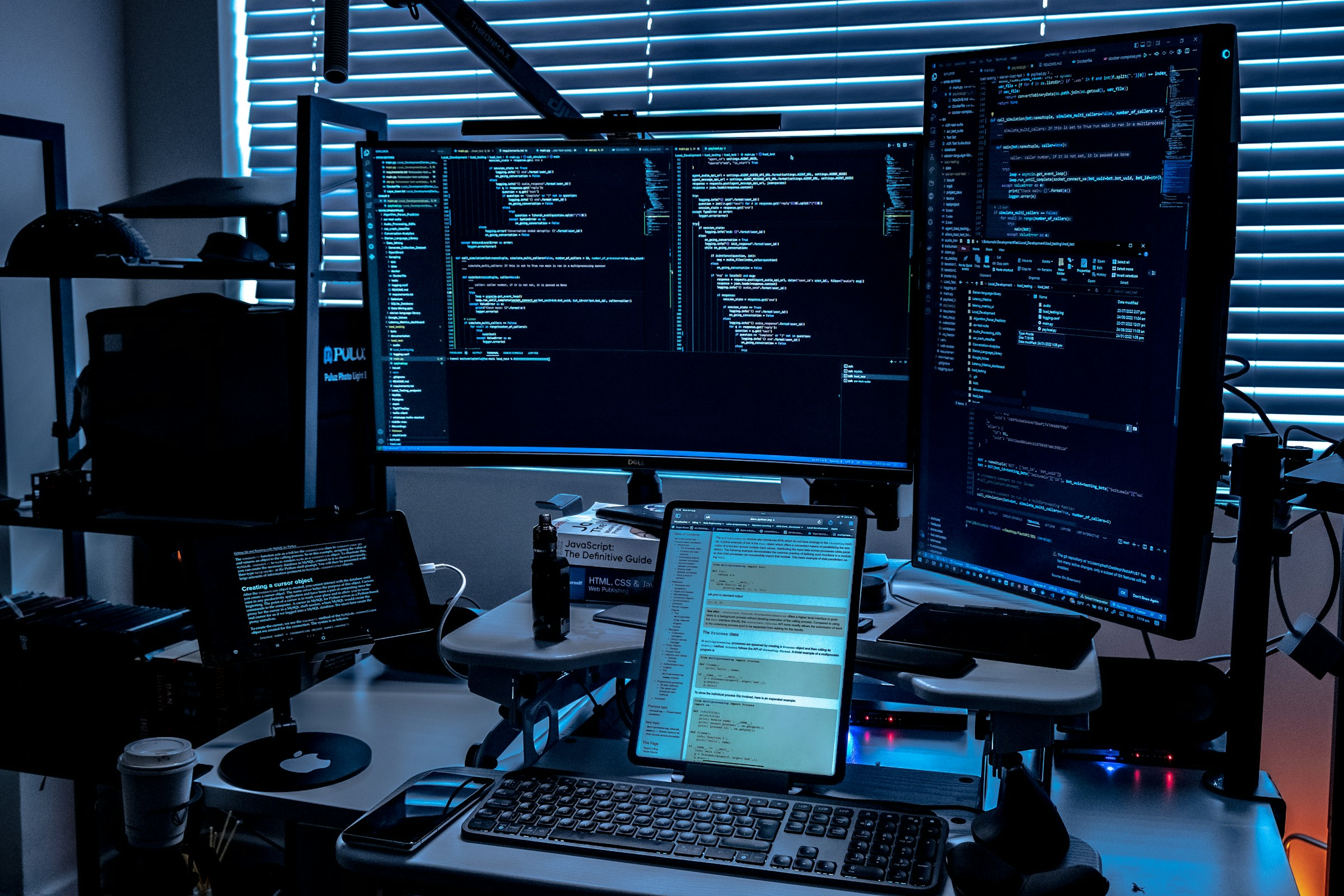

The AI Security Imperative
/ Navigating the AI Cybersecurity Frontier: Strategic Imperatives for Intelligent Enterprises
Artificial intelligence (AI) is revolutionizing cybersecurity, enabling real time threat detection, automated responses, and adaptive defenses. Yet, the same technology that strengthens security also introduces new vulnerabilities, requiring careful governance to prevent AI from becoming an attack vector itself.
Cybersecurity is no longer just a technical function it is a strategic business imperative. As AI driven threats grow more sophisticated, organizations must integrate governance, risk management, and regulatory alignment into their cybersecurity frameworks to ensure resilience.
AI enhances security operations but also creates opportunities for adversaries to exploit system vulnerabilities through adversarial attacks, deepfake based fraud, and AI powered malware. This dual use challenge underscores the growing importance of global security regulations, such as the EU AI Act and NIST AI RMF, which aim to keep AI driven cybersecurity transparent, unbiased, and resistant to manipulation.
Regulatory Compliance and AI Security
As cybersecurity regulations evolve, businesses must align their AI security practices with compliance frameworks to mitigate risks and maintain trust. Key frameworks include:
- NIST AI Risk Management Framework (AI RMF): A structured approach for AI risk assessment and continuous monitoring.
- EU AI Act: Categorizes AI in cybersecurity as high risk, requiring extensive oversight and transparency.
- ISO/IEC 23894: Establishes best practices for AI governance and security resilience.
Organizations that integrate these frameworks strengthen resilience, ensure regulatory compliance, and demonstrate a commitment to secure AI driven systems eventually strengthening stakeholder trust.
Future of AI Driven Cyber Threats
As AI technologies evolve, cyber risks will continue to advance. Key emerging threats include:
- AI Enhanced Cyberattacks: Cybercriminals are leveraging AI to automate and scale attacks faster than traditional methods. AI driven malware adapts to bypass security defenses, while AI generated phishing messages use hyper personalized language and deepfake technology to impersonate executives and launch business email compromise (BEC) attacks. As these threats become more sophisticated, enterprises must invest in AI powered fraud detection and authentication mechanisms to mitigate risk.
- AI Model Vulnerabilities: AI systems themselves present new attack surfaces that adversaries can exploit. Adversarial attacks manipulate input data to mislead AI powered security tools, while data poisoning corrupts AI training sets, undermining detection accuracy. Additionally, model theft and supply chain compromises allow attackers to reverse engineer AI security models or introduce vulnerabilities during model deployment. Securing AI pipelines through encryption, validation, and continuous monitoring is critical.
- Quantum Computing Threats: Future quantum advancements threaten to break existing encryption methods, potentially exposing sensitive data. Enterprises must begin investing in quantum resistant cryptographic protocols now, ensuring long term data protection as quantum technology matures.
- AI Driven Threat Intelligence and Exploitation: AI is not just a defensive tool it is also being weaponized by adversaries. AI powered cyberattacks continuously scan for vulnerabilities, adapting in real time to evade detection. To counteract this, enterprises must adopt continuous monitoring and adaptive security strategies to preempt AI driven threats before they escalate.
Strategies for AI Cybersecurity Resilience: Key Takeaways for Business Leaders
1. Strengthening AI Governance with a Human in the Loop
Effective AI security governance demands transparency, accountability, and continuous risk assessment. Organizations must implement Explainable AI (XAI) to provide visibility into security decisions, ensuring AI driven models remain auditable and aligned with ethical standards. Regular model audits and compliance with global security frameworks (e.g., NIST AI RMF, EU AI Act, ISO/IEC 23894) help mitigate bias and prevent AI models from introducing unintended security vulnerabilities.
However, automation alone is not enough. Human oversight remains essential in identifying AI specific risks that automated systems may overlook. Cybersecurity teams must be trained in AI risk assessment to detect model drift, adversarial attacks, and misclassifications. A human in the loop approach ensures AI driven security remains adaptable, accountable, and aligned with evolving business risks, bridging the gap between automation and human expertise.
Example: At an Anonymous global enterprise, a CEO received a phishing link that mimicked a secure document request. Under pressure and with no immediate red flags, the executive entered their corporate credentials and passed multi-factor authentication (MFA).
Despite this, the attack was stopped.
A conditional access policy, restricting logins to company-managed devices, blocked the final step. The credentials were compromised, but unauthorized device access was denied, preventing a potential breach.
Without this safeguard, privileged systems and communications would have been exposed.
This incident reinforces two key points:
- Even seasoned executives are vulnerable to sophisticated, AI-generated phishing.
- Governance tools like conditional access are only effective when paired with executive awareness and human-in-the-loop strategy.
Human-in-the-loop governance means preparing people– not just systems. Conditional access is critical, but without awareness and training, the risks simply migrate elsewhere.
2. Deploying Dynamic AI Security Architectures with Continuous Threat Adaptation
AI powered cybersecurity requires a zero-trust approach, assuming continuous risk instead of static security perimeters. Organizations must implement real time AI driven authentication and access control that dynamically adjusts security policies based on risk assessments. Continuous verification of users, endpoints, and AI models ensures that security defenses evolve alongside emerging threats.
To further reinforce AI security, organizations must invest in resilient AI infrastructure by:
- Encrypting AI training data to prevent data poisoning and adversarial manipulation.
- Deploying AI specific firewalls to detect anomalies in AI driven cybersecurity applications.
- Leveraging blockchain based security tools to ensure data integrity and prevent unauthorized AI model tampering.
3. The Future of Cyber Resilience: Establish Cross-Sector AI Security Alliances
Cyber threats extend beyond individual organizations, necessitating industry wide collaboration. Businesses should engage in global cybersecurity alliances, regulatory partnerships, and ethical hacking initiatives to share threat intelligence and develop standardized AI security frameworks. A collaborative ecosystem strengthens collective cyber resilience while fostering proactive AI security innovation.
AI powered cybersecurity is no longer a choice, it is a strategic necessity. Organizations that fail to adapt will find themselves outpaced by AI driven threats, making proactive security governance, transparency, and continuous adaptation essential. As AI evolves, cybersecurity must evolve with it. The companies that integrate explainable AI, zero trust frameworks, and proactive risk management will not only mitigate threats but also build lasting trust and regulatory resilience.
The future of cybersecurity leadership belongs to those who take action today. The time to act is now businesses that delay AI security integration risk being outpaced by adversarial AI. Strengthen your defenses today to ensure resilience against tomorrow’s threats.
/ About the Author
- Arjun Aditya is a Digital Marketing Associate at bluegain, where he focuses on digital branding and communications. Before joining bluegain, Arjun worked at Adidas AG on a global transformation project, leading user-centric change initiatives that impacted over 1,000 employees. He also gained experience at Pollup Data Services and A2A Digital Transformation Consulting. Arjun holds a Master’s degree in Digital Business Innovation from Politecnico di Milano.
/ DOWNLOAD WHITEPAPER
Empowering you with knowledge is our priority. Explore our collection of well-thought-out whitepapers available for download. Should you have any questions or wish to explore further, our team is here to assist you.
download


 back to Article
back to Article